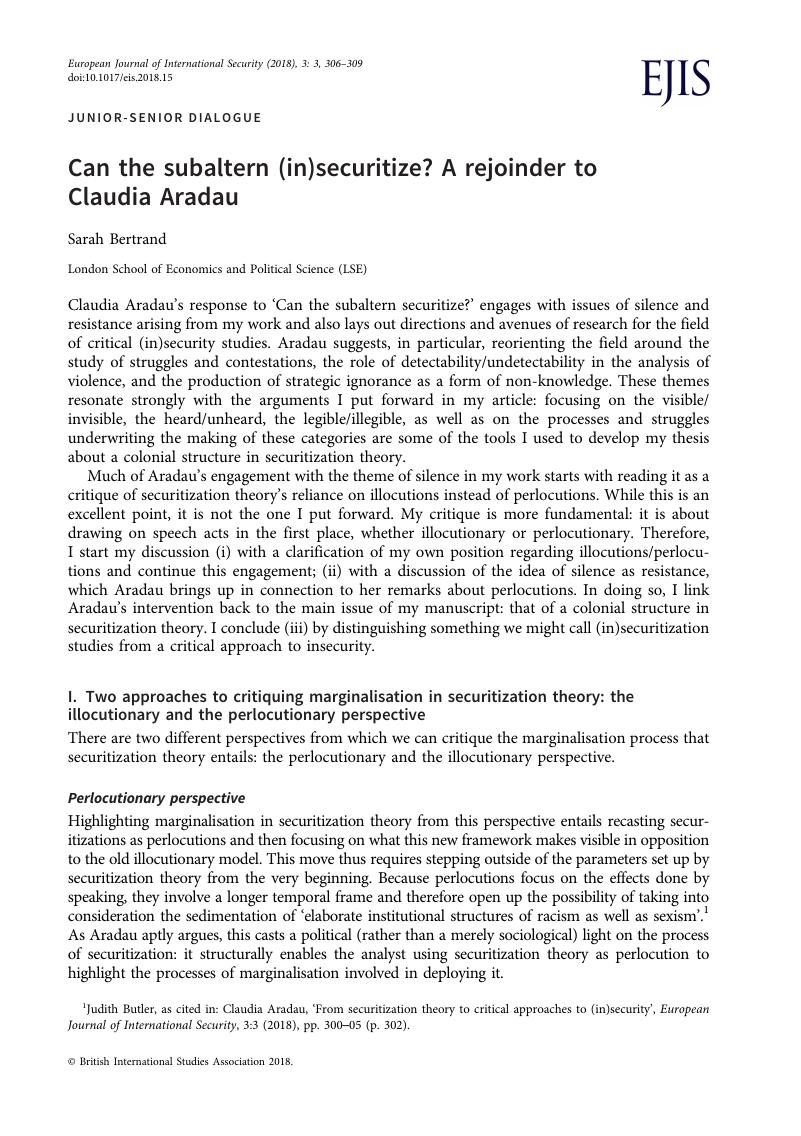Article contents
Can the subaltern (in)securitize? A rejoinder to Claudia Aradau
Published online by Cambridge University Press: 12 September 2018
Abstract

- Type
- Junior-Senior Dialogue
- Information
- Copyright
- © British International Studies Association 2018
References
1 Judith Butler, as cited in: Claudia Aradau, ‘From securitization theory to critical approaches to (in)security’, European Journal of International Security, 3:3 (2018), pp. 300–05 (p. 302).
2 Butler, as cited in Aradau, ‘From securitization theory to critical approaches to (in)security’, p. 302.
3 See Banu Bargu, Starve and Immolate: The Politics of Human Weapons (New York: Columbia University Press, 2016); Banu Bargu, ‘The silent exception: Hunger striking and lip-sewing’, Law, Culture and the Humanities (2017), Online First, available at: doi:10.177/143872117709684.
4 See Lene Hansen’s point about the body and performativity: Lene Hansen, ‘The Little Mermaid’s silent security dilemma and the absence of gender in the Copenhagen School’, Millennium, 29:2 (2000), pp. 285–306.
5 Buzan, Barry and Hansen, Lene, The Evolution of International Security Studies (Cambridge: Cambridge University Press, 2009), p. 215 Google Scholar.
- 2
- Cited by


